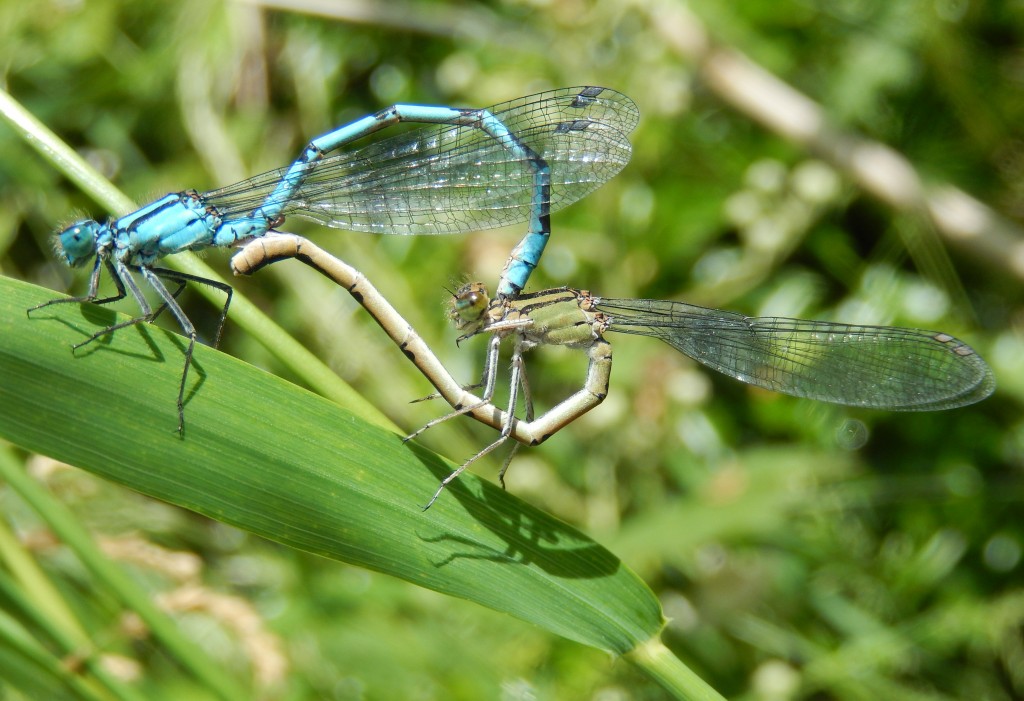
I had a beautiful, peaceful, sunny summer walk down at Wraysbury Lakes. Away from the roar of the traffic and the enormous queues brought on by roadworks and summer weekend commuting, I was surrounded by fluttering, glittering, shimmering Banded Demoiselle males, and on the vegetation also the gloriously iridescent green females, their clear green wings like fine lace dress trimmings to accompany their dazzling emerald-jewelled and enamelled bodies.

As well, Common Blue damselflies basked in the sun; a few pairs in cop carried out their incredibly complicated sex act, all claspers (male tail to female neck, female tail to male belly with its spermatophore and secondary sexual organs, forming the startling ‘heart’ or ‘wheel’, in which the pair can, at a pinch, fly like synchronised swimmers.
At first I thought there were no warblers about, but gradually little bursts of song punctuated the afternoon, and by the end I had heard six warbler species, and good binocular views of three of them (Garden Warbler, Whitethroat and Willow Warbler).
There were some handsome Ichneumons about, but perhaps the insect I was most surprised to see was a Small Tortoiseshell butterfly. When I was a boy these were so common as to be unremarkable – as were House Sparrows, Starlings and Yellowhammers. It is almost a shock to discover that seeing just one is now a rare treat: more nostalgic than pleasurable, perhaps. Much work needs to be done on landscape-scale and farmland conservation to bring back our common butterflies.
